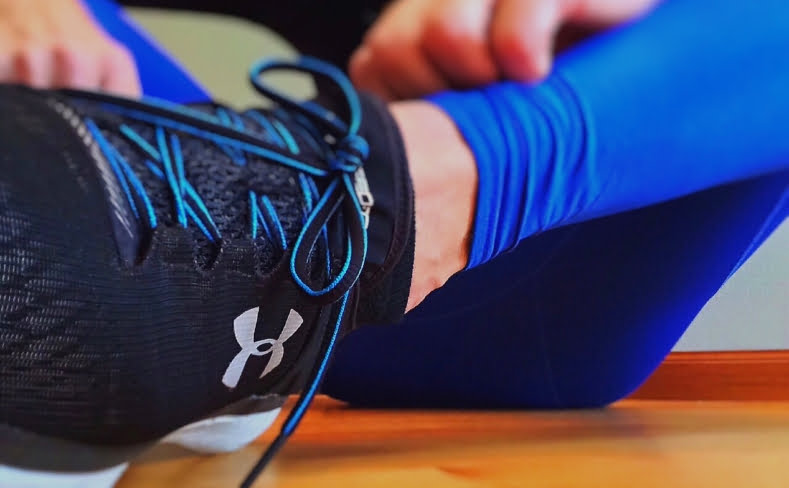Be Prepared: Opiate Detox Symptoms and How to Minimize Them
The United States is facing an opioid crisis–nearly 115 people die every day due to opioid misuse. Opiates are just a subcategory of opioids, and they significantly contribute to the opioid epidemic. If you’re currently battling an opiate addiction, you probably know how detox symptoms feel. And it’s important to start cutting this dangerous habit out of your life as soon as you can.
You might feel trapped when you have an opiate addiction, but there are plenty of ways that can help you quit. As you probably already know, the withdrawal symptoms aren’t pleasant.
Fortunately, your withdrawal symptoms can be reduced with certain treatments and medications. Let’s take a look at the opiate withdrawal process and how you can manage your detox symptoms.
What are Opiates?
Opiates are narcotics made from the poppy flower. They’re typically used as pain-relievers, but they can quickly become addictive. The following list of opiates can result in addiction and dependency:
- Codeine
- Darvocet
- Demerol
- Dilaudid
- Heroin
- Hydrocodone
- Lortab
- Methadone
- Morphine
- Oxycontin
- Percocet
- Suboxone
- Subutex
- Vicodin
Causes of Opiate Addiction and Dependence
When you take an opiate, the drug enters the bloodstream. Soon, the opiate’s effects will reach your brain. Opiates are highly addictive due to the fact that they attach to the brain’s opioid receptors.
When the opiate attaches itself to these receptors, it not only relieves your pain, but it also releases dopamine. Dopamine is associated with a sensation of pleasure–this is what makes it so hard to stop taking opiates. The release of dopamine also blocks noradrenaline, making you feel more drowsy.
If you take opiates for long enough, your brain will become used to high dopamine levels and low amounts of noradrenaline. Your brain will soon only be able to function correctly when you take opiates, and you will become physically dependent on the medication.
Over time, your brain will stop responding to the dopamine from opiates. This means that you’ll feel the need to take higher amounts of opiates so you can feel “normal” again. This is a sign that your body has become tolerant of opiates.
Why Does Opiate Withdrawal Occur?
Opiate withdrawal happens when you become physiologically dependent on opiates. In other words, your body won’t feel right if you’re not taking opiates. Withdrawal symptoms usually appear if you stop taking the drug, or if you lower the dosage.
All opiates are processed through your body at varying speeds. This is why it’s hard to predict when your withdrawal symptoms might start–it all depends on what drug you’re taking.
For example, heroin’s half-life can be a few hours or a few minutes. On the other hand, Vicodin and Oxycontin can stay in your body for 4 to 6 hours, while methadone has a long half-life of about 30 hours.
Detox Symptoms
It’s difficult to answer the question: “How long do withdrawal symptoms last?” Your symptoms and length of opiate withdrawal can vary greatly.
The severity of your withdrawal process is related to how dependent you are on opiate drugs, how long you’ve been taking it, how much you’re taking, what opiate you’re taking, and if you have any mental or physical health conditions. Your withdrawal process might look like the following example, but it can change depending on several factors.
Initial Withdrawal Symptoms
You’ll start to feel withdrawal symptoms in about 6-12 hours if you’re taking opiates with a short half-life. Withdrawal symptoms for opiates with a longer half-life begin 30 hours or later. These are some of the symptoms you might experience initially:
- Anxiety
- A runny nose
- Achy muscles
- Watery eyes
- Insomnia
- Fast heartbeat
- Fever
- Hypertension
- Sweating
- Yawning
Last Withdrawal Symptoms
Your worst symptoms typically happen within three days. These symptoms could last a week or more.
- Depression
- Diarrhea
- Opiate craving
- Stomach pain
- Goosebumps
- Vomiting
It’s common for opiate cravings and depression to last longer than a week. In this case, it’s important to seek out mental health care from a substance abuse program.
Medical Detox Treatment
While some may prefer to stick with natural remedies to cure opiate withdrawal symptoms, others find that medical treatments work better.
It’s important to talk with your doctor first if you want to stop taking opiates so they can provide you with a treatment plan. Remember to never stop taking opiates suddenly, as some withdrawal side effects can be dangerous.
Choosing to undergo medical detox can provide you with pharmacological and psychological support as you slowly wean yourself off of opiates. You’ll stay inside a medical setting where a team of medical professionals can monitor you and provide you with medications to help your detox be as comfortable as possible.
Medical detox typically occurs for a period of 5-7 days.
Opiate Detox at Home
If you choose to undergo opiate or heroin detox in the comfort of your home, your doctor will likely prescribe you with medication to reduce your withdrawal symptoms. Here are some of the medications you can take during your detox and how they can help you:
Methadone
Methadone is a drug that alleviates the symptoms of opiate withdrawal. You can use methadone for maintenance in order to lessen opioid dependence. Methadone will be gradually reduced over time until withdrawal symptoms are completely gone.
Buprenorphine
Like Methadone, Buprenorphine can make it more comfortable to withdraw from opiates. You can take this drug for a long period of time as well.
Clonidine
During your detox, you might feel sweaty, anxious, achy, and have a runny nose. Your doctor may prescribe Clonidine to help relieve these symptoms.
Naltrexone
Doctors prescribe Naltrexone to help you avoid relapsing. You can receive this medication by mouth or through an injection. It’s not a good idea to take this drug when opiates are still in your body, as it can trigger severe withdrawal symptoms.
Learn More About Methadone
Curing an opiate addiction may be a long, difficult process, but your health will improve greatly once you’re opiate-free. Don’t let detox symptoms make you start reaching for that pill bottle again. There are plenty of treatments that can kill your craving, and make you feel like yourself again.
Methadone is a powerful drug that can help you throughout your detox. Click here to learn more about using methadone for opiate withdrawal or contact us today at (855) 976-2092.
References
[1] National Institute on Drug Abuse. (2019, January). Opioid Overdose Crisis. Retrieved from DrugAbuse.Gov: https://www.drugabuse.gov/drugs-abuse/opioids/opioid-overdose-crisis [2] European College of Neuropsychopharmacology. (2007, October 15). How does the opioid system control pain, reward, and addictive behavior?. ScienceDaily. Retrieved February 13, 2019 from www.sciencedaily.com/releases/2007/10/071014163647.htm












Leave a Reply
Want to join the discussion?Feel free to contribute!